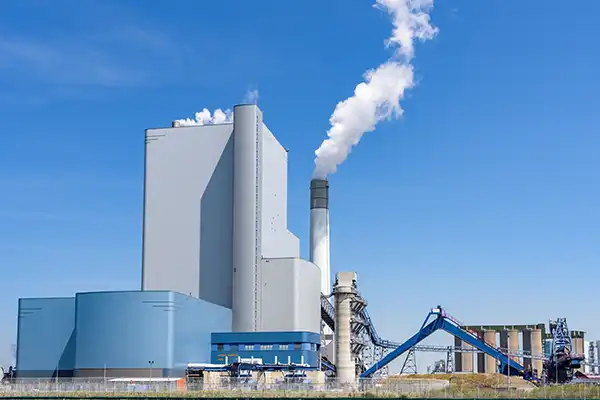The energy sector is full of various terms regarding which type of energy production is environmentally friendly and which is not. Examples include green energy, renewable energy, eco-friendly energy, and many others. However, there is no official definition for green energy.
Vihreä Älyenergia (VÄE) was founded in 2015 with the goal of offering customers the most affordable electricity contract model, where their own consumption can influence both the resulting costs and the slowing of climate change. For us, green energy means all forms of energy that do not produce carbon dioxide (CO2) emissions. Since the goal is to provide electricity that does not contribute to global warming, the equation is quite clear.
Why do we need green energy?
The IPCC, the Intergovernmental Panel on Climate Change, scientifically analyzes information on climate change for national and international decision-making. It has been operating since 1988 and, along with former U.S. Vice President Al Gore, was awarded the Nobel Peace Prize in 2007 for its work in combating climate change.
In its 2023 climate change report, the IPCC concluded without a doubt that human activity is the cause of climate change, and that the global average temperature increase of 1.5–2.0 degrees Celsius will clearly be exceeded this century unless immediate, rapid, and large-scale changes are made to reduce greenhouse gas emissions. In response to this, green energy — energy production that does not produce greenhouse gases such as carbon dioxide — will be needed to replace fossil fuels and traditional energy production.
Is nuclear power green?
The role of nuclear power has sparked heated global debate, particularly within the EU, where countries have had differing views based on their own circumstances about whether nuclear power should be part of the green energy mix. However, the IPCC has estimated in its research that the amount of energy produced by nuclear power must almost double by 2050 if we are to keep global warming within the 1.5-degree Celsius limit. Additionally, technology is currently being developed for the reuse of nuclear waste, which could make nuclear power at least partially a renewable energy source.
Since energy production from nuclear power does not generate carbon dioxide emissions and is entirely fossil-free, it is practically considered green energy. However, every form of energy production has its drawbacks. Wind energy cannot be built everywhere due to noise pollution, and it can also negatively impact bird nesting and animal habitats. The best locations for wind turbines are often far from where electricity is consumed, reducing efficiency. Hydropower blocks fish from reaching their breeding areas, and the reservoirs built for it have significant environmental impacts. Nuclear power produces nuclear waste that must be stored for very long periods, and not all countries handle this as well as Finland.
Green Energy vs. Renewable Energy
Green energy is often equated with renewable energy. However, not all renewable energy is emission-free. For example, biomass, biofuels, and biogas are renewable energy sources, but burning them for energy production generates carbon dioxide emissions. While these emissions are lower than those from fossil fuels, making them a better option than fossil fuels, they are not entirely emissions-free. Other renewable energy sources, such as solar, wind, and hydropower, alongside nuclear energy, do not produce carbon dioxide emissions when generating energy.

The power plant located in the Port of Rotterdam uses coal and biomass as its energy sources, both of which produce carbon dioxide emissions when burned.
All renewable energy production also generates carbon dioxide emissions at some point—not during energy generation itself, but in the manufacturing of the equipment needed for energy production. For example, wind and solar power face the challenge of production intermittency, and currently, almost all electricity consumed is generated at the same time it is used. The mining of minerals for batteries used in energy storage and their limited availability raise questions about whether battery production can be considered an ecological alternative. New battery technologies are emerging, and, for example, the sand battery innovated in Finland could very well be a solution for balancing the fluctuating energy production of wind power.
What is the right choice then? How can I make the most impact?
In practice, all forms of energy production that can significantly reduce carbon dioxide emissions are better than fossil fuels like coal, natural gas, and oil. As mentioned earlier, all energy production has its downsides. So, what is the best way to make an impact?
The amount of emissions and negative effects is influenced not only by individual energy production methods but also by the overall energy production and consumption landscape in Finland. The more evenly and less energy needs to be produced, the better. The fewer fossil fuels or environmentally disruptive methods are required for energy production, the better. The most harmful for the environment are situations where electricity needs to be imported from outside Finland due to peak consumption and production shortages.
Therefore, at Vihreä Älyenergia, we approach the issue from two angles—sourcing electricity from as stable and fossil-free production methods as possible (nuclear power and wind power), and developing the Älyenergia app, which allows every user to manage their electricity usage outside of peak times and, conversely, use more electricity for things like charging electric vehicle batteries when it’s most efficient. Since the pricing on the electricity market is designed to support this approach, there are also financial benefits to considering the environment. We are also planning electricity contract models where managing usage provides clear financial benefits for our fixed-term and fixed-price contract customers. So, stay tuned.
